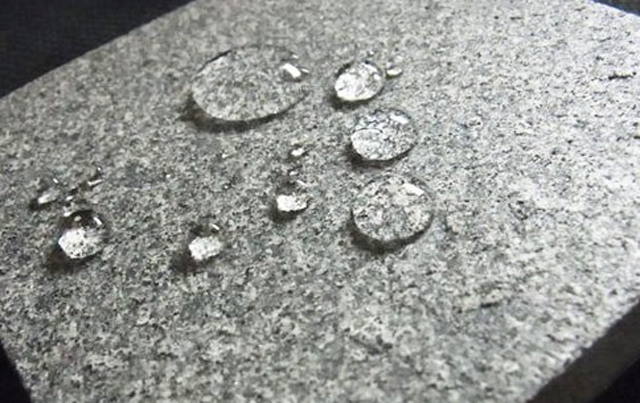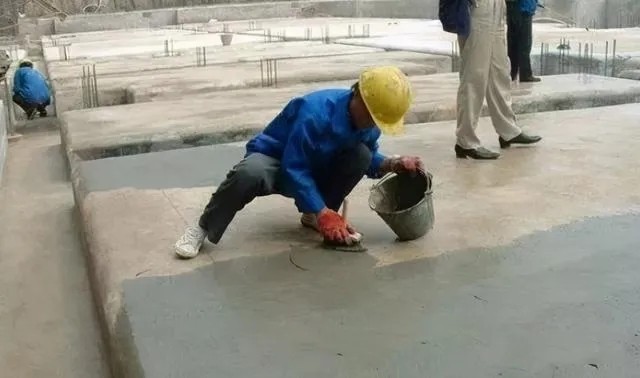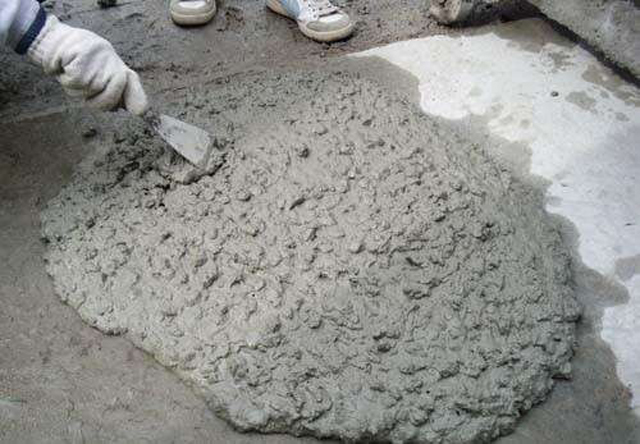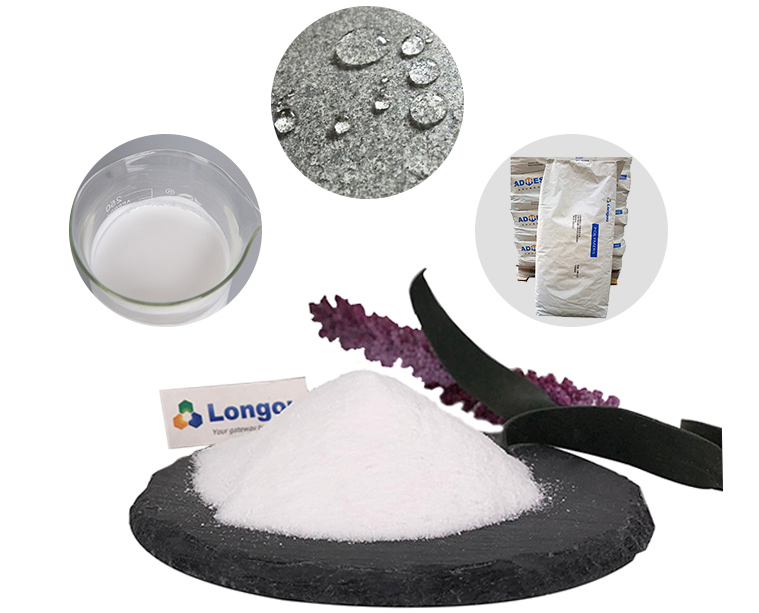Common cement mortars with waterproofing agent include: chloride metal salt waterproofing agent cement mortar, inorganic aluminum salt waterproofing agent cement mortar, metal soap salt waterproofing agent cement mortar, silicon waterproofing agent cement mortar, etc.

It can be constructed on the wet surface, which is difficult for general solvent waterproof and anticorrosive materials in China. Construction can be carried out in mixed concrete. Because the object has an impact on the construction base surface, the adhesion of the coating to the concrete is increased. At the same time, the cationic neoprene latex material fills the pores and fine cracks in the mortar, so that the coating has Good impermeability.
The bonding force is 3 to 4 times higher than that of ordinary cement mortar, and the flexural strength is more than 3 times higher than that of ordinary cement mortar, so the mortar has better crack resistance. It can be waterproof, corrosion-proof and moisture-proof on the front surface, back surface, slope surface and special-shaped surface. Strong adhesion, will not produce hollowing, crack resistance, water channeling and other phenomena.

Cationic neoprene latex can be used for waterproofing and anticorrosion, but also for plugging and repairing. There is no leveling layer and protective layer, and it can be completed in one day. The construction period is short and the comprehensive cost is low. It can be constructed on a wet or dry base surface, but there must be no running water or stagnant water in the base layer.
Cationic neoprene latex has the general properties of neoprene, excellent mechanical properties, resistance to sunlight, ozone and atmosphere, and seawater aging, resistance to oil esters, acids, alkalis and other chemical corrosion, heat resistance, non-flame, self-extinguishing, resistance Deformation, vibration resistance, abrasion resistance, good air tightness and water resistance, and high total adhesion. It is non-toxic and harmless, and can be used in the construction of drinking pools. The construction is safe and simple.
1. Before construction, the ground and vertical surface of the waterproof base layer must be flat, rough, clean and damp. Generally, the waterproof mortar layer must be completed in two passes. First, the waterproofing agent should be mixed with water at about 1:8 and cement mixing plain mortar with a thickness of 1mm-1.5mm. Make the bonding layer, and apply waterproof mortar 10mm-20mm thick when the plain ash is initially set. During the retardation period, it must be cured and polished and compacted 1-2 times. The curing method is the same as the conventional cement curing method. If the tiles need to be glued, the pitted surface can be wiped out before the full strength (basement or difficult waterproof project with high water pressure, according to the site conditions, repeat the above process once or twice).

2. When making waterproof mortar, if there are pipe fittings, floor drains, columns and other special parts in the bathroom, they need to be treated first. Use a drill to drill around the roots to form a concave shape, clean and damp, and then use plain ash to wipe the roots into a convex shape (slope type), which is similar to the above-mentioned 1mm-1.5mm thick element. The ash bonding layer is integrated, and waterproof mortar is used for initial setting.
3. In the maintenance of leakage engineering, when the original foundation is smooth, it needs to be drilled into a pitted surface.
4. When spraying on exterior wall finishes, the original liquid of waterproofing agent (without water) can be sprayed 2-3 times. When mixed with liquid decorative paint, it can be added according to the color of the paint. Generally, the water-proofing agent should be mixed with water = 1: (1-3 ) Left and right, mixed in the paint, the spraying process of the paint remains unchanged.

The difference between ordinary waterproof mortar and polymer waterproof mortar lies in whether polymer latex is used for functional waterproofing. In other words, ordinary waterproof mortar achieves compact waterproof effect by optimizing the gradation or adding water-repellent agents such as inorganic aluminum salt at the same time. The polymer waterproof mortar is waterproof by mixing a certain proportion of acrylic ester, EVA and other latex into the mortar.
In terms of performance, the flexural performance and bonding strength of polymer waterproof mortar are generally higher than those of ordinary waterproof mortar.
1.1 The mixed material of dry-mixed ordinary waterproof mortar: dry and sieved aggregates (such as quartz sand), inorganic cementing materials (such as cement) and additives (such as polymers), etc., are physically mixed in a certain proportion. It is a kind of granular or powdery materials that are transported to the construction site in bags or bulk, and can be used directly after mixing with water.
1.2 Mixed materials of polymer cement waterproof mortar: cementing materials, such as cement, gypsum, etc.; can be used in dispersing latex powder materials, such as acrylate, polyvinyl alcohol, styrene-acrylate copolymer, etc.; admixture materials, such as Water retention, hydrophobic agent, thickening, thixotropy, air-entraining, defoaming, early setting, slow setting, etc.
2.1 Types of dry-mix ordinary waterproof mortar: including ordinary dry-mix and special dry-mix. Among them, ordinary dry-mix includes DM dry-mix interior wall masonry mortar, DPI dry-mix interior wall plastering mortar, and DPE dry-mix exterior wall plastering Mortar, DS dry mix floor mortar, DW dry mix ordinary waterproof mortar; special dry mix includes DTA dry mix tile bonding mortar, DEA dry mix polystyrene board bonding mortar, DBI dry mix external thermal insulation surface mortar.
2.2 Types of polymer cement waterproof mortar: polymer waterproof mortar (hard waterproof mortar, flexible two-component waterproof mortar), polymer thermal insulation mortar, polymer facing mortar 5. Polymer reinforced mortar (compressive strength ≥55MPa) Polymer anti-corrosion mortar (anti-acid, anti-alkali, anti-salt, anti-ultraviolet, anti-high temperature, etc.), polymer repair mortar, and other types of tile adhesives and interface agents.

Previous: The Versatile Uses of PVA Powder
Copyright:@2020-2021
Comments Please sign in or sign up to post.
0
0 of 500 characters used